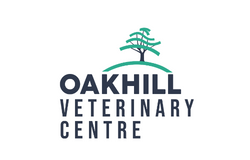Cat microchip law: owners given deadline for when cats have to be microchipped – or face £500 fine
A new law was introduced on 13th March that makes microchipping pet cats and keeping contact details up to date compulsory for all owners. The new microchipping rules give owners until 10 June 2024 to microchip their cat, making it easier for pet cats to be returned home safely if lost or stolen.
There are currently over 9 million pet cats in England, with as many as a quarter of them (2.3 million) unchipped. The new rules mean cats must be implanted with a microchip before they reach the age of 20 weeks and their contact details stored and kept up to date in a pet microchipping database.
Environment Secretary Thérèse Coffey said “Cats and kittens are treasured members of the family, and it can be devastating for owners when they are lost or stolen.
“Legislating for compulsory microchipping of cats will give comfort to families by increasing the likelihood that lost or stray pets can be reunited with their owners.”
All owners must have their cat microchipped by 10 June 2024 and owners found not to have microchipped their cat will have 21 days to have one implanted or may face a fine of up to £500.
The introduction of compulsory cat microchipping was a manifesto commitment and an Action Plan for Animal Welfare pledge, following a Government call for evidence and consultation on the issue in which 99% of respondents expressed support for the measure.
Chief Veterinary Officer Christine Middlemiss said “I am pleased that we are progressing with our requirement for all cats to be microchipped.
“Microchipping is by far the most effective and quickest way of identifying lost pets. As we’ve seen with dog microchipping, those who are microchipped are more than twice as likely to be reunited with their owner.
“By getting their cat microchipped, owners can increase the likelihood that they will be reunited with their beloved pet in the event of it going missing.”
The process of microchipping involves the insertion of a chip, generally around the size of a grain of rice, under the skin of a pet. The microchip has a unique serial number that the keeper needs to register on a database. When an animal is found, the microchip can be read with a scanner and the registered keeper identified on a database. No matter how far from home they are found, or how long they have been missing, if a cat has a microchip there is a good chance that a lost cat will be swiftly returned home and reunited with their owner.
It will not be compulsory for free living cats that live with little or no human interaction or dependency, such as farm, feral or community cats.
Owners with cats that are already microchipped should ensure their details are up to date.
The commitment to microchipping is part of a wider Government effort to build on their existing world-leading standards. Since publishing the Action Plan for Animal Welfare in 2021 the UK has brought in new laws to recognise animals sentience, introduced tougher penalties for animal cruelty offences and brought forward a ban on glue traps.
